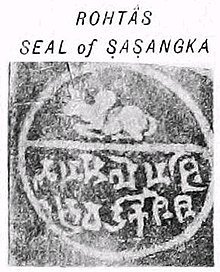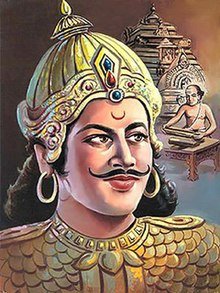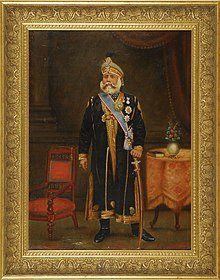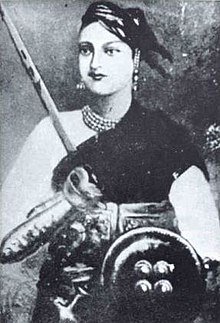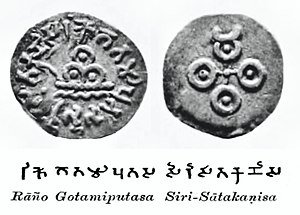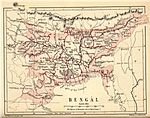Vindhyashakti (r. c. 250 – 275 CE[1]) was the founder of the Vakataka dynasty. His name might be derived from the goddess Vindhyavasini, or it could be a title or biruda referring to his patrimony in the Vindhya mountains rather than a personal name.[2] No inscription or record belonging to the reign of Vindhyashakti has been discovered so far.[3] In the much later Ajanta Cave XVI inscription of… Continue reading Vindhyashakti
ऐतेहासिक
Vasudeva Kanva
Vasudeva Kanva (c. 75 – c. 66 BCE) was the founder of the Kanva dynasty.[1] He was originally an Amatya (minister) of last Shunga ruler Devabhuti. Vasudeva killed the last Shunga ruler and established Kanva dynasty.[2] Bana’s Harshacharita informs us that he came to power after the death of Devabhuti by a daughter of his slave woman disguised as his queen. He was… Continue reading Vasudeva Kanva
Shashanka
Shashanka (IAST: Śaśāṃka) was the first independent king of a unified polity in the Bengal region, called the Gauda Kingdom and is a major figure in Bengali history.[1] He reigned in the 7th century, some historians place his rule between circa 600 CE and 636/7 CE,[2] whereas other sources place his reign between 590 and 625 CE.[3] He is the contemporary of Harsha and… Continue reading Shashanka
Raja Ganesha
Raja Ganesha (Bengali: রাজা গণেশ) was a Hindu ruler of Bengal, who took advantage of the weakness of the first Ilyas Shahi dynasty and seized power in Bengal.[2] Contemporary historians of the medieval period considered him as an usurper. The Ganesha dynasty founded by him ruled over Bengal from 1415−1435.[3] His name mentioned in the coins of his son, sultan Jalaluddin Muhammad Shah as Kans Jha or Kans Shah.[4] The Indo-Persian historians… Continue reading Raja Ganesha
Pushyamitra Shunga
Pushyamitra Shunga (IAST: Puṣyamitra Śuṅga) (ruled c. 185 – c. 149 BCE) was the founder and first ruler of the Shunga Empire which he established against Maurya Empire. Pushyamitra was originally a Senapati “General” of the Maurya Empire. In 187 BCE he assassinated the last Mauryan Emperor, Brihadratha Maurya, during an army review, and made himself as an emperor. Pushyamitra is recorded to have performed numerous Ashvamedha campaigns to legitimize… Continue reading Pushyamitra Shunga
Mayurasharma
Mayurasharma or Mayuravarma (reigned 345–365 C.E.) a Kannada scholar and a native of Talagunda (in modern Shimoga district), was the founder of the Kadamba Kingdom of Banavasi, the earliest native kingdom to rule over what is today the modern state of Karnataka, India.[1][2] Before the rise of the Kadambas, the centres of power ruling the land were outside the Karnataka region; thus the Kadambas’ ascent to power… Continue reading Mayurasharma
Raja Dahir
Raja Dahir (Sindhi pronunciation: [rɑːɟɑː ɗɑːɦirə]; Sindhi: رَاجَا ڏَاهِرَ ,राजा ॾाहिर; Sanskrit: राजा दाहिर सेन, IAST: Raja Dahir; 663 – 712 CE) was the last Hindu ruler of Sindh in the western region of the Indian subcontinent that is now located in modern Pakistan after partition of India in 1947.[1] In 711 CE his kingdom was invaded by the Ummayad Caliphate led by Muhammad bin Qasim where Dahir died while defending his kingdom. According to the Chachnama, the Umayyad… Continue reading Raja Dahir
Rani of Jhansi
Lakshmibai, the Rani of Jhansi (pronunciation (help·info); 19 November 1828 — 18 June 1858),[1][2] was an Indian queen, the Maharani consort of the Maratha princely state of Jhansi from 1843 to 1853 as the wife of Maharaja Gangadhar Rao.[3] She was one of the leading figures of the Indian Rebellion of 1857 and became a symbol of resistance to the British Raj for Indian nationalists. She died in the Rebellion,… Continue reading Rani of Jhansi
Gautamiputra Satakarni
Gautamiputra Satakarni Brahmi: 𑀕𑁄𑀢𑀫𑀺𑀧𑀼𑀢 𑀲𑀸𑀢𑀓𑀡𑀺, Gotamiputa Sātakaṇi, IAST: Gautamīputra Śatakarṇi) was a ruler of the Satavahana Empire in present-day Deccan region of India. He was mentioned as the important and greatest ruler of Satavahana Dynasty. He ruled in the 1st or 2nd century CE, although his exact period is uncertain. His reign is dated variously: 86-110 CE,[3] c. 103-127 CE,[4] 106-130 CE,[5] or more recently and specifically… Continue reading Gautamiputra Satakarni
Gangu (ruler)
Gangu or Gangadhar Shastri Wabale was a Brahmin ruler of the Deccan. Ala-ud-din Hasan Bahman Shah, the founder of the Bahmani Sultanate, was a servant and general in his service. Biography Gangu was a Brahmin ruler of the Deccan.There is a popular legend regarding him narrated by the 17th century poet Ferishta, which says that Hasan Gangu (Ala-ud-Din Bahman Shah) was a servant of a brahmin ruler named Gangu… Continue reading Gangu (ruler)
Chach of Aror
Chach (c. 631-671 CE) (Sindhi: چچ)[1] was a Hindu Brahmin king of Sindh region of the Indian subcontinent in the mid-7th century CE. Chach expanded the kingdom of Sindh, and his successful efforts to subjugate surrounding monarchies and ethnic groups into an empire covering the entire Indus valley and beyond were recorded in the Chach Nama. Biography Chach was a Brahmin[2][3] who rose to a position of influence… Continue reading Chach of Aror
Bhavashankari
Bhavashankari (Bengali: মহারানী ভবশঙ্করী, romanized: Bhavaśaṅkarī) was a ruler of Bhurishreshtha kingdom of Bengal, who resisted the Lohani Pathan sultans of South Bengal and established hindu sovereignty in her kingdom.[1][2] [3] Coronation and the Battle of Bashuri Bhavashankari returned to the capital early next morning and assumed control of the affairs of the State.[4] In absence of hard evidence, she couldn’t try Chaturbhuj Chakravarti, she instead… Continue reading Bhavashankari



